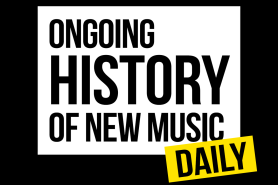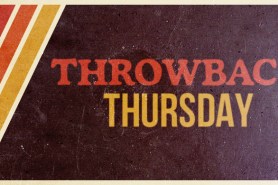A new U.S. election poll that shows U.S. Vice-President Kamala Harris leading Donald Trump in the traditionally Republican state of Iowa has sent shockwaves through the presidential race just before Election Day on Tuesday.
But experts are still warning that the race overall is so close that no single poll — even from a source as reputable as Iowa pollster J. Ann Selzer, using a different methodology than others — can accurately predict what may happen on Nov. 5.
“This is one poll, in one state, at one moment in time,” said Samara Klar, a polling expert and political science professor at the University of Arizona.
“It’s certainly interesting and will be looked back on with some interest (after Election Day), but we still can’t predict what will happen.”
The Des Moines Register/Mediacom poll released Saturday showed Harris beating Trump 47 to 44 per cent in Iowa, a state Trump won by nine points in the last two presidential elections.
Although Harris’ lead is within the 3.4-per cent margin of error and differs from other Iowa polls that show Trump winning, the new poll is notable given Selzer’s track record of accurately predicting the eventual winner of the state since 2012.
That reputation, along with the poll’s suggestion that women and independent voters are pushing Harris ahead, has pundits predicting other polls may be underestimating Harris’ support in midwestern battleground states like Wisconsin that will decide the winner of the Electoral College.
Researchers and analysts, however, remain cautious.
“There’s just no way of knowing if that’s true,” said Matthew Lebo, a political science professor at Western University.
“It’s a high quality poll in that (Selzer’s) firm is trustworthy and has good methodology and all of that. But that doesn’t mean that it’s right.”
The latest FiveThirtyEight national polling average has Harris leading Trump by just one point as of Monday.
In six of the seven battleground or swing states — Pennsylvania, Georgia, Wisconsin, Michigan, North Carolina and Nevada — there is one point or less separating the two candidates, while Trump leads by more than two points in Arizona. RealClearPolitics’ average of the seven battlegrounds has Trump ahead by just 0.7 per cent.
The averages are tight because the individual polls themselves are razor-thin, with results typically falling within the margin of error — meaning the race is effectively tied.
Polling experts say the story being told by polls is typically solidified in the final days of an election, making “outlier” individual polls that break away from that story cause for skepticism.
However, they also say some voters don’t make up their mind until those final days, or until they actually cast their vote.
“We’ve seen examples all over the world where five, 10 per cent of people make up their minds in the voting booth, and that’s impossible to predict,” said Darrell Bricker, CEO of Ipsos Public Affairs, in a previous interview.
A New York Times/Siena College poll released Sunday suggested that, among the eight per cent of voters surveyed who said they had only recently decided on who to vote for, 55 per cent said they chose Harris, while 44 per cent said Trump.
Pollsters say Harris could outperform the polls if they underestimate her support the way they did for Democrats in the 2022 midterms, which predicted a stronger Republican wave in Congress than what materialized.
But Trump could also benefit if he’s underestimated the way he was in 2016 and 2020 — errors that polling firms say they have corrected.
Klar said it’s here that Selzer’s poll could be seen as either an outlier or a predictor of a larger trend.
“If a poll in Iowa is overstating support for Democrats, then usually what happens is it turns out all the polls are overstating support for Democrats,” she said.
“Polls tend to be wrong in the same direction across states.”
Trump has criticized both the Selzer poll in Iowa and the New York Times polling as “fake” and suggested Selzer — who Trump called one of his “enemies” at a rally in Pennsylvania on Sunday — skewed her data to favour Democrats.
In interviews with multiple media outlets over the weekend, Selzer defended her methodology and said she herself was “shocked” by the Harris lead her data showed.
“No one, including me, would’ve thought that Iowa could go for Kamala Harris,” she told MSNBC on Monday.
Most modern polling relies on online panels of potential respondents, which doesn’t immediately reflect the broader population. Pollsters will then “weigh” their data to correct for any imbalances, and several different methods exist for how to do that based on a number of factors.
However, Selzer’s firm still uses a more old-school polling method of targeted dialing over the phone to get a more representative sample right away. She also used far less weighing than her peers, a method Selzer told MSNBC she calls “polling forward” because it doesn’t take into account historical factors like past voting behaviour and turnout.
“I think that’s the reason people are so intrigued by it, is because she uses a little bit of a different methodology,” Klar said. “People are now sort of wondering which method is best.”
Selzer told MSNBC and CNN that her method is the same one used in the 2016 and 2020 polls that correctly predicted Trump’s victories in Iowa, and pushed back on Trump’s accusations of intentionally skewing the data.
“I can’t see that there’s any advantage to me or my career in messing with the numbers to make it look a particular way,” she told CNN. “There’s no upside.”
The Washington Post noted on Monday that, although Iowa has leaned Republican recently, Barack Obama won the state in both 2008 and 2012 — which Selzer also correctly predicted. It also pointed out Selzer has been incorrectly dismissed as an outlier before, during the 2020 election, which she also got right.
Experts say nonpartisan pollsters like Selzer don’t intentionally wait to release their polls to favour one party or another, another criticism of Trump’s campaign.
However, they say the timing may benefit Democrats by boosting optimism and turnout, which Trump is responding to.
“(Harris and Democrats) want everybody to be worried and make sure that they go out to the polls, which is quite different than Trump, who I think wants everybody to think he’s ahead so that if he loses, he can claim it was stolen,” Lebo said.
© 2024 Global News, a division of Corus Entertainment Inc.












 Ad Choices
Ad Choices